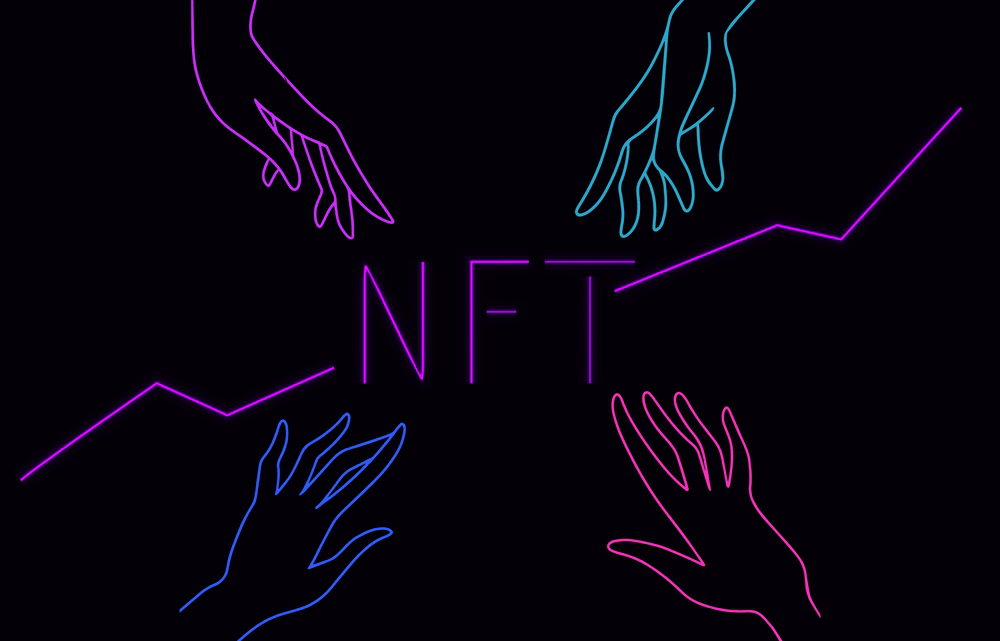NFT: what are “Non-Fungible Tokens” and what are they used for?
 Boopathi Krishnan
Boopathi Krishnan
What is an NFT?
The acronym NFT comes from the phrase Non-Fungible Token, which in Spanish could be translated as "Non-fungible Token." These are unique digital assets, not modifiable and not exchangeable for other assets of the same value since they are unique and there are no copies.
NFTs are somehow compared to works of art, in which each piece is unique, and if a user wants to have that piece they have no choice but to acquire it (or acquire a copy but it will no longer be the original )
Therefore, an NFT is a digital asset that has a unique character and, as such, can receive a certain market value.
How does an NFT work?
The operation of an NFT is based on the possibilities that the blockchain gives to the digitization of any content and its transformation into a Token.
The above is combined with smart contracts that allow, through "metadata", to generate proof of authenticity, authorship, value and the transactions that the asset has had since its creation, including factors such as price, etc..
Therefore, when an NFT is created, a certification of authorship, authenticity, and, when sold, ownership is simultaneously generated.
The operation on which an NFT is based is based on two tokens on the Ethereum blockchain, specifically the ERC-721 (the initial one) and the ERC-1155 (the one most used today).
Best marketplace provider: NFT Marketplace Development
What characteristics do NFTs have?
One of the basic characteristics of NFTs is that it is a digital asset model. Does not allow transformation. That is, it can be equivalent to a cryptocurrency.
The definition assigns a unique character to each asset, although there are cases, for example, digital trading cards, in which assets are catalogued based on rarity.
Its marketing and use is based on the blockchain itself, which guarantees the authenticity and security of the asset, which must be stored in a digital asset wallet, just as if it were a cryptocurrency.
NFT use cases
Non-fungible tokens have transcended the boundaries of art and collectables to find applications in areas as diverse as the entertainment industry, real-world asset ownership, and much more. Although there are several use cases for NFTs, the three main ones are:
Digital Art and Unique Collections: NFT-backed digital art has revolutionized the art industry by allowing artists to sell and monetize unique digital works. NFTs provide authenticity and verifiable ownership, allowing collectors to own exclusive pieces of digital art. Additionally, NFTs have given rise to new ways to create and market digital collections, offering exciting opportunities for artists and collectors.
Gaming Tokens and Virtual Properties: NFTs have found prominent applications in the video game and virtual property industry. With NFTs, players can own and trade objects, characters, and properties within games, providing a new level of ownership and value. NFTs also enable the creation and sale of virtual properties, such as land in virtual worlds, offering investment and growth opportunities within these digital environments.
Applications in music, sports and more: In addition to art and video games, NFTs also have applications in other fields, such as music and sports. Music artists can release albums and songs backed by NFTs, allowing them to monetize their work and offer exclusive experiences to their fans. In the sports space, NFTs are used to create digital collectable cards of athletes, offering fans a new way to own and trade these unique items.
Benefits and challenges of NFTs
Non-fungible tokens have captured the attention of the digital community with their ability to grant authenticity, ownership and exclusivity to digital assets. However, they also pose challenges in terms of sustainability, volatility and speculation. Below, we will explain the unique benefits that NFTs offer, as well as the challenges they face, to give you a complete and balanced view of this form of digital property.
Monetization and decentralized digital ownership: NFTs provide creators and artists the opportunity to monetize their work in a direct and decentralized way. By using NFTs, creators can receive instant income from the sale of their digital works, without intermediaries and with greater control over their assets. Additionally, NFTs enable decentralized digital ownership, meaning buyers are guaranteed authenticity and exclusive ownership of their blockchain-backed NFTs.
Sustainability and energy consumption challenges: As NFTs gain popularity, concerns have also arisen about their environmental impact (1) . The NFT creation process requires a large amount of energy and can have a high ecological cost due to the energy consumption of the blockchain. It is important to address these challenges and seek sustainable solutions to mitigate the environmental impact of NFTs.
Volatility and speculation in the NFT market: The NFT market can be highly volatile and speculative. NFT prices can experience significant fluctuations, which can create risks for both buyers and sellers.
Subscribe to my newsletter
Read articles from Boopathi Krishnan directly inside your inbox. Subscribe to the newsletter, and don't miss out.
Written by
